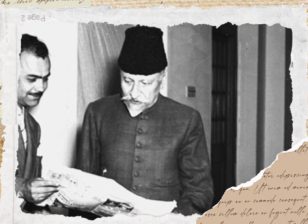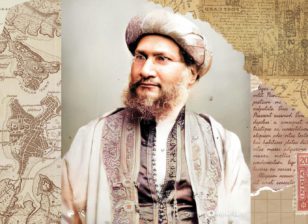Dr. Mukhtar Ahmed Ansari: Surgeon of the Nation and Architect of Unity
In the grand tapestry of India’s freedom struggle, some names roar through history, while others, just as heroic, whisper their legacy through the corridors of forgotten memory. Dr. Mukhtar Ahmed Ansari was one such towering figure; a healer by profession, a unifier by conviction, and a freedom fighter by destiny.
At a time when the country bled under colonial oppression, he wielded not just the surgeon’s scalpel, but also the fire of defiance, diplomacy, and sacrifice.
From London’s elite hospitals to Delhi’s restless streets, from the presidency of the Indian National Congress (INC) to the founding of Jamia Millia Islamia, Dr. Ansari’s life was an extraordinary fusion of intellect, activism, and service. He stood at the crossroads of medicine and nationalism, Hindu-Muslim unity and pan-Islamic solidarity, choosing time and again to put nation before self.
This is not just the story of a man who defied an empire, this is the story of a bridge-builder, a dreamer of Swaraj (self-rule), and a patriot who gave everything so his country could be free.
Here’s a closer look at the remarkable life, political contributions, and enduring legacy of Dr. Mukhtar Ahmed Ansari, a freedom fighter, medical luminary, and a bridge between communities in India’s struggle for independence.
A Medical Pioneer with a Global Reputation
Born on 25 December 1880 in Yusufpur, Ghazipur, Dr. Ansari obtained his medical degree from Madras Medical College, and later completed his MD and MS from the University of Edinburgh in 1905. Graduating at the top of his class, he held prestigious posts in London including House Surgeon, Charing Cross Hospital, Resident Medical Officer, Lock Hospital and Clinical Assistant, St. Peter’s Hospital. Despite an assured future in Britain, he returned to India in 1910, choosing service to his country over personal ambition.
Defiance Against the Rowlatt Act
In 1919, the British colonial government passed the Rowlatt Act, granting sweeping powers to suppress political dissent. From the heart of Delhi, Dr. Mukhtar Ahmed Ansari, a soft-spoken yet determined physician from Ghazipur (Uttar Pradesh), stood in open opposition to this oppressive legislation. Already involved in the Home Rule Movement since 1916 and a member of the Indian National Congress, this moment deepened his commitment to India’s freedom.
He played a leading role in Delhi’s strikes, protests, and public meetings, becoming the first president of the Satyagraha Sabha on 24 February 1919. When Mahatma Gandhi arrived in Delhi on 7 March, Dr. Ansari was the first to take the Satyagraha pledge. His home became a command center for the movement, frequented even by Gandhi himself.
Leadership in the Khilafat and Non-Cooperation Movements
Dr. Ansari emerged as a key figure in the Khilafat Movement, which sought to protect the Ottoman Caliphate and mobilize Indian Muslims against colonial rule. He led the Khilafat delegation that met the Viceroy in January 1920 and convened the All India Muslim Conference in Lucknow (September 1921), urging Muslim intellectuals to join the freedom movement. His vision of unity culminated in forging a powerful alliance between the Khilafat Committee, Muslim League, and the Congress, making it one of the most impactful coalitions of that era.
A Stalwart of the Indian National Congress
Dr. Ansari was one of the rare leaders who held high-ranking roles in both the Muslim League and the Congress. He served as General Secretary of the Indian National Congress in 1920, 1922, 1926, 1929, 1931, and 1932 and as President of the 42nd Congress Session in Madras (1927), where he delivered a rousing address on Hindu-Muslim unity. That same session passed the historic resolution for complete Swaraj (self-rule), reflecting his ability to unify diverse voices.
Personal Sacrifice for the National Cause
Dr. Ansari’s commitment went far beyond speeches and conferences, he donated his entire personal wealth to Congress activities. His financial sacrifices led him to near ruin, yet he continued undeterred.
In 1927, he oversaw nationwide protests against the Simon Commission, and was instrumental in reviving the Swaraj Party, giving momentum to India’s demand for self-governance.
Architect of Jamia Millia Islamia
Dr. Ansari was a founding member and later Chancellor of Jamia Millia Islamia, one of India’s most influential institutions. After the death of Hakim Ajmal Khan, one of the founders in 1927, Dr. Ansari took over leadership and made the critical decision to relocate the university from Karol Bagh to its permanent home in Okhla, Delhi.
Final Journey and Eternal Rest
On the night of 10 May 1936, Dr. Ansari suffered a fatal heart attack while returning from Rampur. In accordance with his wishes, he was buried on the campus of Jamia Millia Islamia, the very institution that symbolized his dreams for education and national service.




